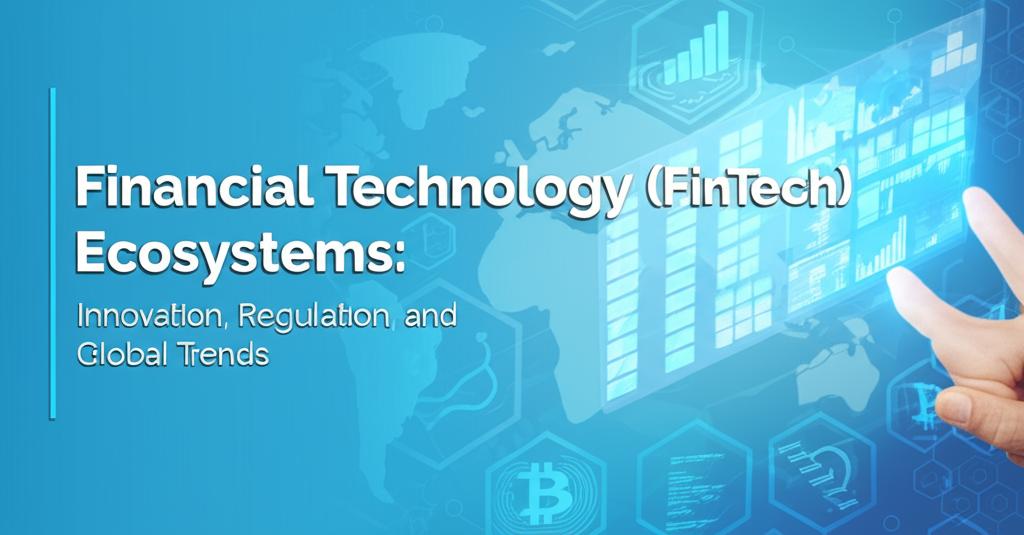The FinTech ecosystem continues its rapid transformation, driven by technological breakthroughs, shifting consumer demands, and an evolving regulatory environment. As we move through 2025, the industry is maturing, moving beyond hype towards practical execution and demonstrating significant growth, with projections suggesting a global market value exceeding $460 billion this year and potentially surpassing $1 trillion in the coming decade.
Key Innovation Drivers Shaping the EcosystemSeveral technological forces are propelling the FinTech landscape forward:
- Artificial Intelligence (AI) Integration: AI is no longer a peripheral tool but a core component of FinTech innovation. Its application spans multiple areas:
Automation: AI automates lending decisions (reducing processing times significantly), risk management, compliance reporting (RegTech), and financial reporting.
Personalization: AI enables hyper-personalized financial products, services, and advice, tailoring offerings based on individual user behavior and needs.
Enhanced Security: AI-powered systems provide real-time fraud detection, predictive risk analysis, and sophisticated cybersecurity defenses against evolving threats like deepfakes and synthetic identities.
Customer Experience: Beyond basic chatbots, AI drives intelligent financial assistants that proactively offer insights and support.
Efficiency: AI tools boost developer productivity and streamline operations, improving time-to-market.
Many financial institutions are heavily investing in AI, recognizing its potential to create competitive advantages and deliver substantial value.
- Embedded Finance and Open Banking: Financial services are increasingly integrated seamlessly into non-financial platforms and daily activities. Driven by Open Banking regulations and APIs, embedded finance allows payments, lending, insurance, and investment functionalities within e-commerce sites, SaaS platforms, ride-hailing apps, and more. This trend shifts the focus for some FinTechs towards becoming infrastructure providers, enhancing customer experience, and opening new revenue streams for various businesses. The market for embedded finance is experiencing rapid growth, expected to generate hundreds of billions in revenue.
- Blockchain, Digital Assets, and Decentralized Finance (DeFi): These technologies are maturing and finding more practical applications.
Blockchain: Adopted by institutions for efficiency, security, and transparency in areas like settlements, trade finance, and identity verification. It promises significant infrastructure cost savings.
Digital Assets: Central Bank Digital Currencies (CBDCs) are being actively explored globally. Stablecoins are gaining traction for transactions, and the tokenization of real-world assets (like real estate) is expanding market access and liquidity.
DeFi: Decentralized Finance continues to evolve, offering peer-to-peer lending, borrowing, and trading, potentially challenging traditional structures and promoting financial inclusivity.
- Payment Innovations: The payments landscape is continuously evolving with:
Real-Time Payments (RTP): Instant transaction processing is becoming the standard.
Cross-Border Payments: Solutions focus on reducing friction, costs, and delays, often leveraging embedded finance and multi-currency wallets.
Virtual Cards: Growing rapidly, especially in B2B, offering enhanced control, security, and streamlined expense management.
'Glocal' Payments: Balancing global reach with local payment preferences is crucial for international success, often managed via payment orchestration platforms.
- Cybersecurity and Digital Identity: As financial services digitize, robust security is paramount. AI-driven security, behavioral biometrics, and advanced fraud prevention are critical. Digital identity solutions are also advancing, incorporating biometrics and embedding into secure digital wallets that go beyond simple payments.
Regulation is a defining feature of the FinTech ecosystem, creating both challenges and opportunities:
- Increased Scrutiny and Complexity: Regulators worldwide are intensifying oversight across areas like crypto-assets, AI use, Buy Now Pay Later (BNPL), open finance, cybersecurity, data privacy, and anti-money laundering (AML). Compliance requirements are becoming stricter and more complex.
- Global Coordination: Efforts are underway to establish unified global standards, particularly for digital assets (e.g., EU's MiCA) and AI (e.g., EU AI Act), aiming for greater consistency across jurisdictions.
- Rise of RegTech: Regulatory Technology (RegTech) leverages AI and automation to help firms manage compliance efficiently, automate reporting, enhance transaction monitoring, and detect fraud in real-time.
- Data Privacy and Security Focus: Regulations like GDPR mandate secure and transparent handling of customer data, reinforcing the need for robust data governance and protection measures.
- Balancing Innovation and Risk: Regulators and the industry grapple with fostering innovation while ensuring consumer protection, financial stability, and market integrity.
Beyond specific technologies and regulations, broader trends are shaping the FinTech world:
- Market Growth and Consolidation: The FinTech market continues its strong growth trajectory, attracting significant investment, particularly in B2B segments like payments and RegTech. M&A activity is expected to increase as companies seek scale and strategic acquisitions.
- Partnerships and Collaboration: The lines between traditional finance, FinTechs, and Big Tech are blurring. Strategic partnerships (Bank-FinTech, FinTech-FinTech, etc.) are crucial for innovation, accessing new markets, leveraging expertise, and navigating regulations.
- Focus on Customer Experience: Hyper-personalization, seamless integration, and building trust are paramount. Super Apps, offering a consolidated financial experience, are gaining traction.
- Financial Inclusion and Sustainability: FinTech continues to play a role in expanding access to financial services for underserved populations. Sustainable and Green FinTech solutions are also emerging as priorities.
- Shift to Execution: The focus is moving from pure innovation hype to efficient, scalable, and secure execution. Operational resilience, robust infrastructure (often cloud-native), and acquiring skilled talent are key priorities.
The FinTech ecosystem in 2025 is a dynamic and interconnected space characterized by relentless innovation, particularly driven by AI and embedded finance. Regulation acts as both a guardrail and a catalyst, shaping the path forward. Collaboration, a keen focus on customer needs, and the drive for efficient, secure, and scalable operations are essential for navigating this evolving landscape. FinTech firms, traditional institutions, and regulators must work together to harness the potential of technology responsibly, building a more inclusive, efficient, and resilient financial future.

